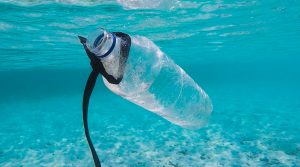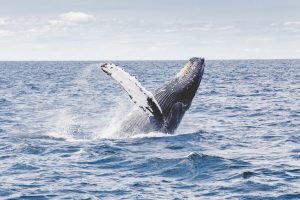Reflecting on 2019
By Kailyn Klotz , guest blogger

Photo by Kelly Sikkema on Unsplash
It’s officially 2020, and most of us are ready to move full speed ahead into the next decade. But while the start of a new year is a time to refresh, it is also a time to reflect on and honor the past year’s successes. Some of you might be surprised at how many there were!
Read more and smile at a few of the happy — and important — environmental events and trends of 2019.
Global climate strikes and the youth movement

Photo by Callum Shaw on Unsplash
Greta Thunberg, the now famous 16-year old Swede, stood up in front of the entire world to express the importance of urgent climate action. In the summer of 2018 she led the first of many climate strikes now known as “Fridays for Future,” and in the process encouraged countless young people across the globe to join her.
These protests snowballed in 2019, and the Global Climate Strike took place in September. This was a week-long occurrence in which 2,500 separate climate events were scheduled in over 163 countries on all seven continents. Event organizers noted that nearly four million people all over the world participated, providing hope to us all that many folks of all ages do care what is happening to our planet.
Rise of plant-based meat and dairy alternatives
It is likely you can now find plant-based meat at your favorite fast-food or burger joint! Due to the rising demand for meat alternatives, companies like Beyond Meat and Impossible Burger are finding a spot on the menus of places like Dunkin Donuts, Hard Rock Café, and Burger King. This is huge, considering meat consumption comes with major environmental consequences. You can now curb those Whopper cravings and help save the planet at the same time.

Photo by Kaffee Meister on Unsplash
Similarly, we’ve also seen a rise in demand for dairy alternatives. While for many years the main competitor of cow’s milk was soy milk (consumed primarily by lactose intolerant folks), it now finds itself up against a wide variety of substitutes. Most grocers carry almond, oat, coconut, and cashew milks. And on top of that, there has been an increase in dairy-free cheese, yogurt, and ice cream.
New National Parks — Indiana Dunes National Park and White Sands National Park
President Trump, famously known for attacking public lands, signed on two new national parks this past year. In February, Indiana Dunes National Park was established out of an approved budgeting bill. The new park is situated on the southern end of Lake Michigan and is known for its beaches, grassy ridges, prairies and, of course, its sand dunes.
Similarly, this past December, White Sands National Park was established through the National Defense Authorization Act for Fiscal Year 2020. White Sands is located in the Tularosa Basin of southern New Mexico and is the earth’s largest gypsum dune field.
Although both parks were established through legislation indirectly related to our National Park System, this is a huge win for ecosystems and nature lovers alike.
Ocean Cleanup’s first success
Back at the start of the decade, the now 25-year-old Dutch inventor Boyan Slat presented to the world The Ocean Cleanup — a project with the daunting mission to rid our oceans of plastic.

Photo by Brian Yurasits on Unsplash
The Ocean Cleanup deployed multiple prototypes and conducted tests in various bodies of water, all without much success. But in June 2019, the project harvested its first batch of plastic. System 001/B was deployed out of Vancouver, Canada into the Great Pacific Garbage Patch, returning with garbage that ranged in size from car tires to plastic pieces as small as 1mm, otherwise known as microplastics. Having the ability to collect debris of all sizes is a step in the right direction of removing plastics that endanger marine ecosystems. Once The Ocean Cleanup is ramped up full time, it estimates it will collect over 12,000,000kg of plastic in its first year.
Recovering species
It has been said that we are in the midst of the earth’s sixth mass extinction. A study conducted in 2017 estimated that data from 177 different mammals showed that 40% of the species “have experienced severe population declines,” mostly due to human activity. But wait, there is good news! In 2019 we made significant progress in helping to recover several animals on the brink of danger. Here are a couple hopeful highlights:
In the 1950s the number of humpback whales in the South Atlantic Ocean was down to about 450, primarily due to commercial whaling. As of October 2019, an estimated 25,000 humpback whales live in these waters. This whopping 93% increase is largely due to protections set back in the 1960s.

Photo by Thomas Kelley on Unsplash
In 2018, the Northern white rhino subspecies lost hope for regeneration with the loss of its last male rhino. However, scientists discovered that the Northern white and Southern white rhinos (the latter of which are not endangered) are genetically closely related, and are hopeful for reproduction between the two subspecies. The first step towards this pairing was a major success when eggs from the last two remaining female Northern white rhinos, who are unable to carry a pregnancy themselves, were extracted. Viable embryos were created with them in August 2019, with the intention of implanting them in a surrogate Southern white female.
While 2019 won’t be remembered as “the year we saved the planet,” we learned a lot and took some mighty steps toward getting there. Hopefully we can be brave enough in the next decade to grow the positive energy of Greta’s climate strikes, demand green innovation, visit more national parks, and be kinder to the other creatures that share this world with us.
Happy 2020!
